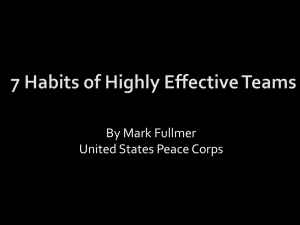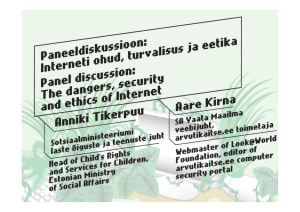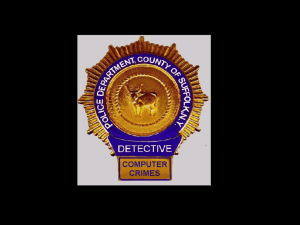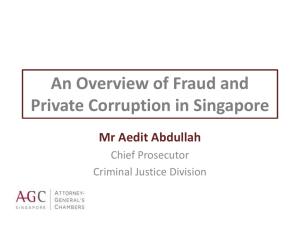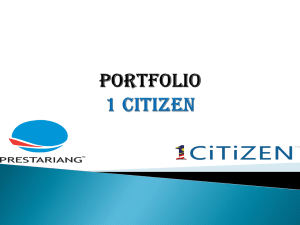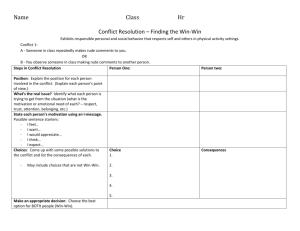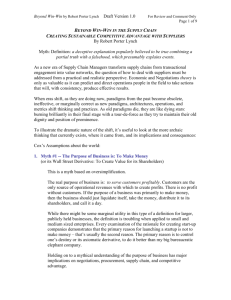Thinking it through again (new lesson)
advertisement
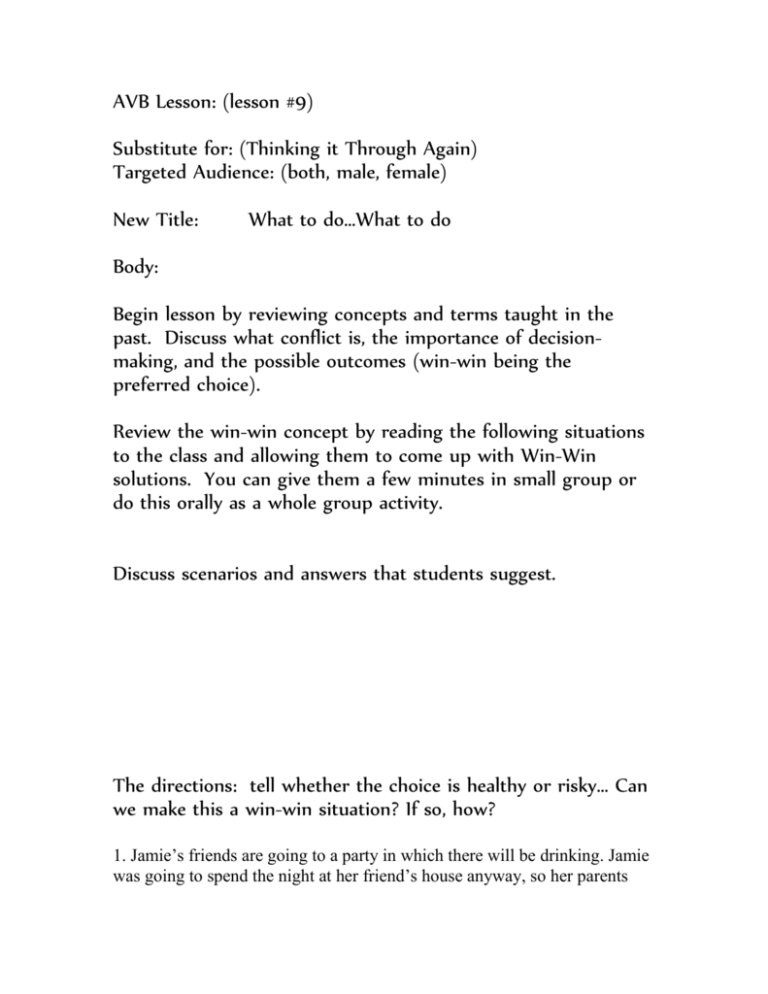
AVB Lesson: (lesson #9) Substitute for: (Thinking it Through Again) Targeted Audience: (both, male, female) New Title: What to do…What to do Body: Begin lesson by reviewing concepts and terms taught in the past. Discuss what conflict is, the importance of decisionmaking, and the possible outcomes (win-win being the preferred choice). Review the win-win concept by reading the following situations to the class and allowing them to come up with Win-Win solutions. You can give them a few minutes in small group or do this orally as a whole group activity. Discuss scenarios and answers that students suggest. The directions: tell whether the choice is healthy or risky… Can we make this a win-win situation? If so, how? 1. Jamie’s friends are going to a party in which there will be drinking. Jamie was going to spend the night at her friend’s house anyway, so her parents would never know if she attended the party. Jamie decides to go. She probably won’t have anything to drink anyway. 2. Josh just made the football team. He’s happy, but struggling a bit, too. Other team members offer him some little red pills they say will help him play better. Although Josh doesn’t really know what the pills are, he decides that taking just a couple won’t hurt, and they might help. He’ll never know if he doesn’t try it. 3. Jose is new in school and wants to make some friends. He’s always been a good student, but the guys he’s met so far think it’s geeky to get good grades. Jose doesn’t say much, and he tries to avoid the subject. When the guys want him to cut class one day, Jose decides not to. 4. Jamal’s friends seem to have changed lately. They aren’t as interested in school and some of them have begun to smoke. Jamal is concerned about them. While trying to talk to them one day, they offer him a cigarette. He accepts. He doesn’t want them to think he’s a big nag. And if he joins them, he might have a better chance of talking to them about the changes he’s noticed. It’s just one cigarette. 5. Justine is trying to lose weight and has made some progress following a diet planned by her doctor. After school, her friends want her to go get pizza with them, and pizza is not on her diet. She asks her friends if they could go someplace else where she can get a dinner that won’t ruin her diet. From discovery education DVD –Reality Matters: Big Decisions Use the existing “Deal With This Cards” on pages 140 and 141. With a partner have students read the situation and then complete following Choices handout. “Deal With This Cards” can be copied and cut into strips. Pass out one strip to each pair. Be sure to make enough copies. Continue making decisions and dealing with conflict by completing the next activity (Crime and Punishment) with the partnered pair closest to you. This activity is from steppingstonesforvets.org. Come together at the end to discuss the difficulty of decisionmaking and the impact it has on everyone around you. Encourage thoughtful decisions and Win-Win solutions. Michelle Short/Clark Middle School/ ASD 7/20/10 Name _________________ Identify the problem. Partner ______________ Worst Case Scenario Consequences for me Best Case Scenario Consequences for others CRIME AND PUNISHMENT WORKSHEET: INSTRUCTIONS Say to the group: You must reach agreement on how to rank the following crimes according to your estimate of the gravity of the offense. A (3) B (4) C (3) must be ranked as deserving ten years to life imprisonment as deserving from two to eight years imprisonment as deserving one year or less, or a suspended sentence You may add judicial recommendations, for example, suspension of driver’s license, psychiatric treatment, etc. (if you have time). Think in terms of prevention and assume it is a first offence unless otherwise stated. Agreement means substantial agreement, not necessarily unanimity. Otherwise the group can decide for itself what constitutes agreement and should discuss how best to reach it. Problems are solved best when individual group members accept responsibility for both hearing and being heard so that everyone is included in what is decided. The best results flow from a sharing of information, reason and feeling. Conflict of ideas, solutions, predictions, etc., should be viewed as helping rather than hindering the process of seeking consensus. You, as a group, have 25 minutes to carry out the following (see next page). Crimes to be ranked as: A – (three crimes) B – (four) C – (three) 10 years or life imprisonment 2-8 years 1 year or less, or suspended CRIME AND PUNISHMENT WORKSHEET 1. Hit and run. Driver knows s/he has hit a pedestrian on a country road at night, but drives on leaving the pedestrian seriously injured. Pedestrian not found until the morning. 2. Arson. Historic 150 year-old church completely destroyed. No one injured. 3. Abduction and rape of a 15 year-old girl, kept in confinement for two months. 4. Armed robbery. Police officer shot in get-away, and remains in critical condition. 5. Series of false income tax returns. Defrauded the government of $1,000,000 in the last four years. 6. Personal possession of heroin. 7. Couple habitually leaves two pre-schoolers on their own in a frame farmhouse when they go into town to play Bingo. House burns down one night. Neighbors rescue children. 8. Third offense for driving under the influence of alcohol. Mother of three killed. 9. Solicits teenagers (some under 13) for prostitution and pornography. Over 30 teenagers enlisted in one year. 10. Terrorists hijack a plane that lands in Canada. Pilot injured, but no one killed. From the scenarios listed above, indicate the scenario # in one of the columns below: 10 Years to Life (three crimes 2-8 Years (four crimes) 1 year or less or suspended (three crimes)
